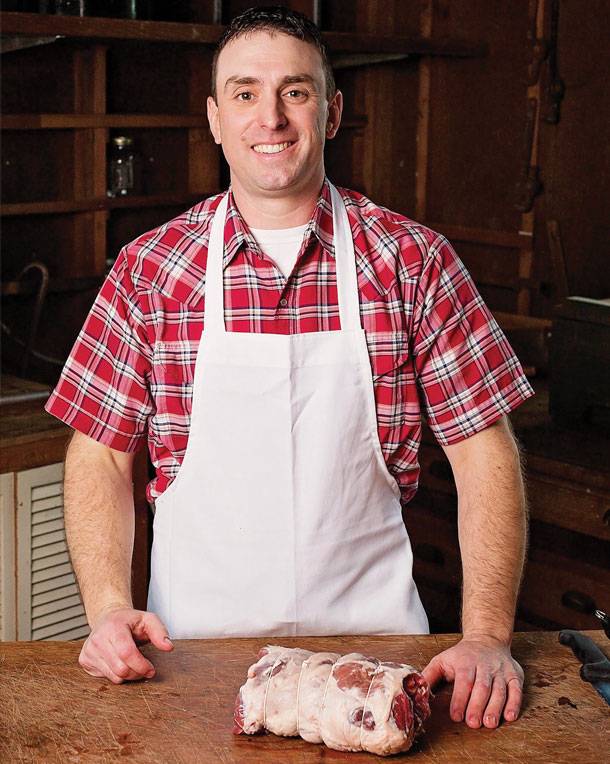“There’s generally a pretty big discount on those carcasses. It’s just more encouragement to have really good management practices to help mitigate that,” says Phil Bass, University of Idaho assistant professor in meat science.

Bass says dark cutters happen when cattle are under stress within a week of harvest. The greatest cause for dark cutters is drastic weather changes.
According to data from the 2016 National Beef Quality Audit, the month with the greatest numerical frequency of dark cutters was October at 0.74 percent.
“Usually, we see an uptick in the number of dark-cutting carcasses with cattle harvested in the spring and the fall, where you have hot days and cold nights and a bit more weather swings that are hard to control,” Bass says.
Scheduling in weather swings
Most cattle and cattle in large feedlots are scheduled for harvest long before they are actually loaded out. That means those feeders cannot reschedule their loadouts based on weather swings.
For large yards, they have to load out every day and cannot work around the weather. Bass suggests making sure animals are on a good nutrition plane.
“If you can ship outside of the spring and the fall, that’s great. Many large yards don’t have that luxury. You’ve got to ship every day,” Bass says. “It’s just something to expect and make sure these animals are on a good, high plane of nutrition before they get shipped.”
Because a rough trucking trip can trigger dark cutters, he also suggested asking truckers their understanding of proper trucking technique, like calm loading, taking corners gradually and gradual braking, to minimize stress on their way to the plant. Make sure trucks and trailers are in good working order to avoid breakdowns.
He notes that for cattle that are shipped long distances and sit on a truck for a long time, that also causes stress.
“If an animal has to sit on a truck for a long period of time, there’s a higher instance of dark cutting,” Bass says.
He also suggests talking to the harvest facility about their unloading facilities and practices. Calm off-loading is critical at the packing plant. Make sure there is good footing and traction at the plant.
A solid wall enclosed area at the harvest facility also keeps cattle from seeing all of the activity going on in the yard and keeps their stress down.
“You want to keep them calm all the way up to the point of harvest,” Bass says.
A feedlot perspective
Winners of the 2018 BQA Feedyard Award, BLAC-X Farms of Beaver Creek, Minnesota, ship cattle when they need to go.
“They go when they go. They have a delivery date, and that’s when they go,” says Peter Bakken, who runs BLAC-X Farms with his brother, Jay. “We’ve loaded in a blizzard.”
Bakken says they usually do not get a lot of feedback on dark cutters unless they ask for it from their Tyson buyer or see they have a no-roll.
Bakken feels that animal handling has more effect on the incidence of having a dark cutter.
“The facilities we have aren’t fancy, but they flow. We just try to have gates in appropriate spots and no hooting and hollering,” Bakken says. “We can load a pot in less than 10 minutes. We get them up and get on the road.”
Most of their cattle go to Tyson in Dakota City, Nebraska, which is about a two-hour drive. When they load, they do mix pens to keep the cattle with their “friends.”
“I often think about the movie theater or a concert. If you’re waiting with your friends, you’re a lot more comfortable than standing with people you don’t know,” Bakken says.
Dropping incidence
Over the years, producers have been improving their cattle-handling practices. The result has been less stressed cattle and less dark cutters. According to data from the 2016 National Beef Quality Audit (NBQA) from in-plant data collection, the incidence rate of dark-cutting carcasses was 1.9 percent – the lowest in NBQA history. That number is down from the 2011 NBQA incidence rate of 3.2 percent.
“The incident rates have decreased over the years; just our better understanding of good animal-handling practices, good management practices and focus more on cattle,” Bass says.
With their improved cattle-handling skills, producers have reduced the number of dark cutters, but Bass says they can still make improvements by choosing more docile cattle.
“Try to identify animals that tend to have better docility to them to help control the stress of shipping,” Bass says. “The number of cattlemen out there has decreased, so we have to, as an industry, pick animals that are easier to handle.”
While dark cutters result in a discount, the safety and the quality of the meat is fine. The meat will be dark in color rather than the consumer’s preferred beef color choice of bright cherry red. That makes it difficult for retailers to sell that meat as is.
Bass says oftentimes, dark-cutting meat will no-roll, which means it does not receive a USDA grade and will be sold to a further processor that will inject the meat with a water and salt solution.
Since dark-cutting beef has a pH of 5.8 to 6.5, it can give off a metallic taste. Processors will often mix that dark-cutting beef with ground beef to keep the off flavor of dark-cutting meat low.
“In all cases, the dark-cutting meat is still perfectly safe to eat. It just has a visual issue as well as the tenderness issues,” Bass says. ![]()
PHOTO 1: A ribeye section from a dark cutter carcass. Photo courtesy of Texas A&M University.
PHOTO 2: University of Idaho Associate Professor Phil Bass says selecting for docility in cattle breeds is another way to prevent dark cutters. Photo provided by Phil Bass.
Wendy Sweeter is a freelance writer based in South Dakota. Email Wendy Sweeter.






